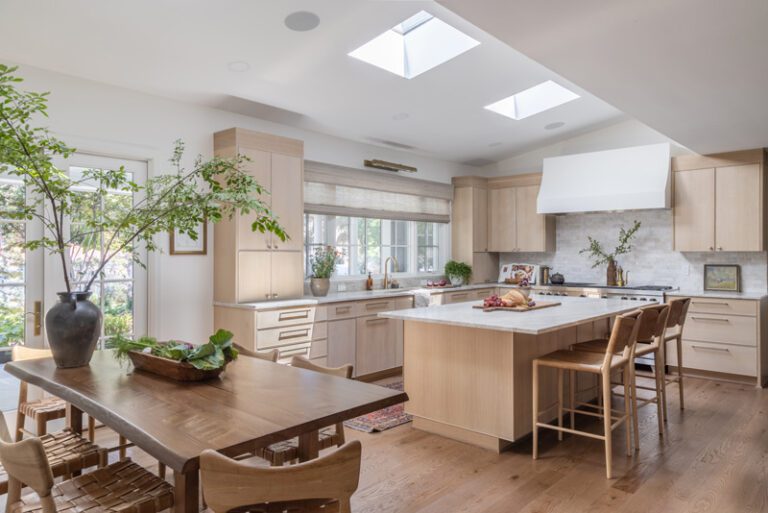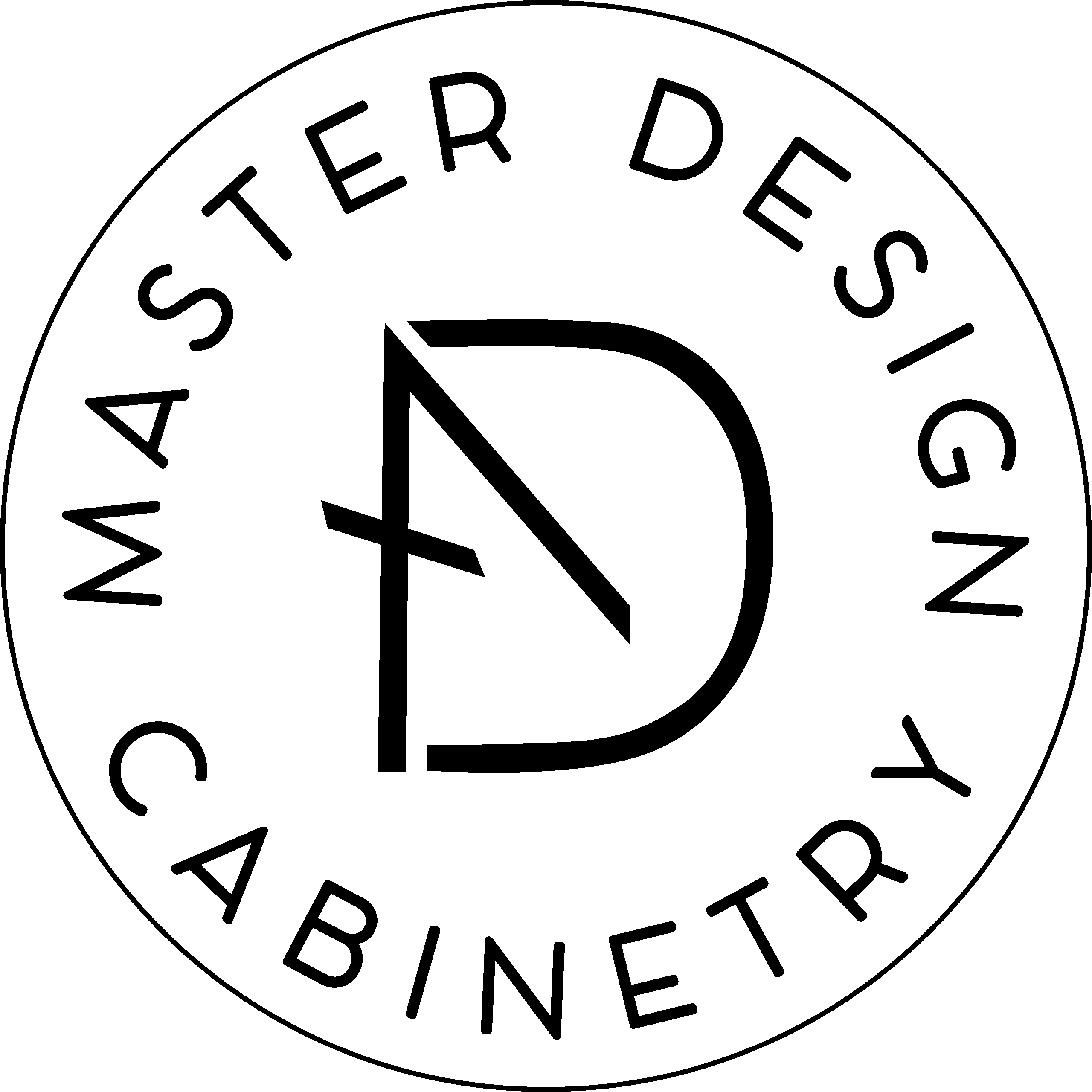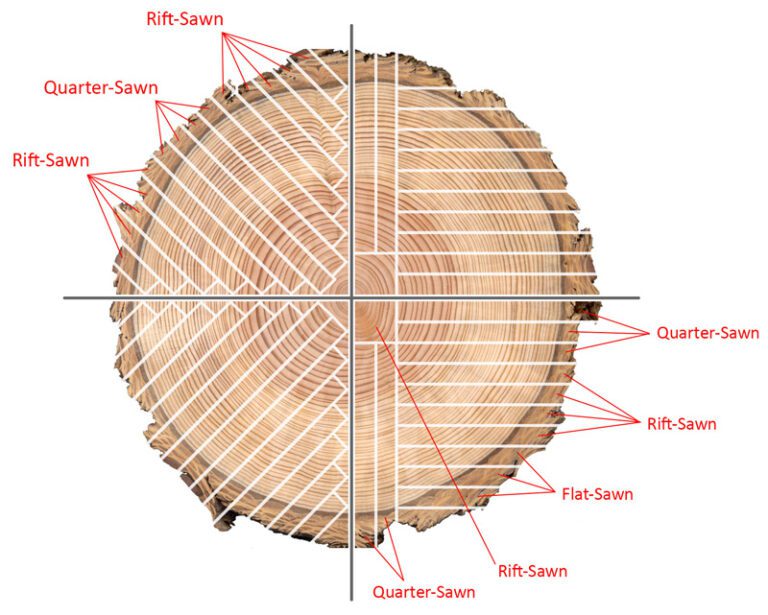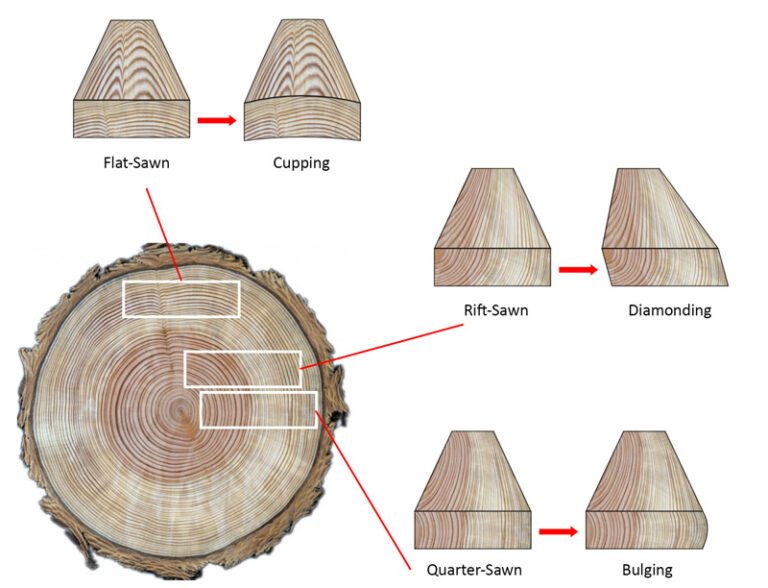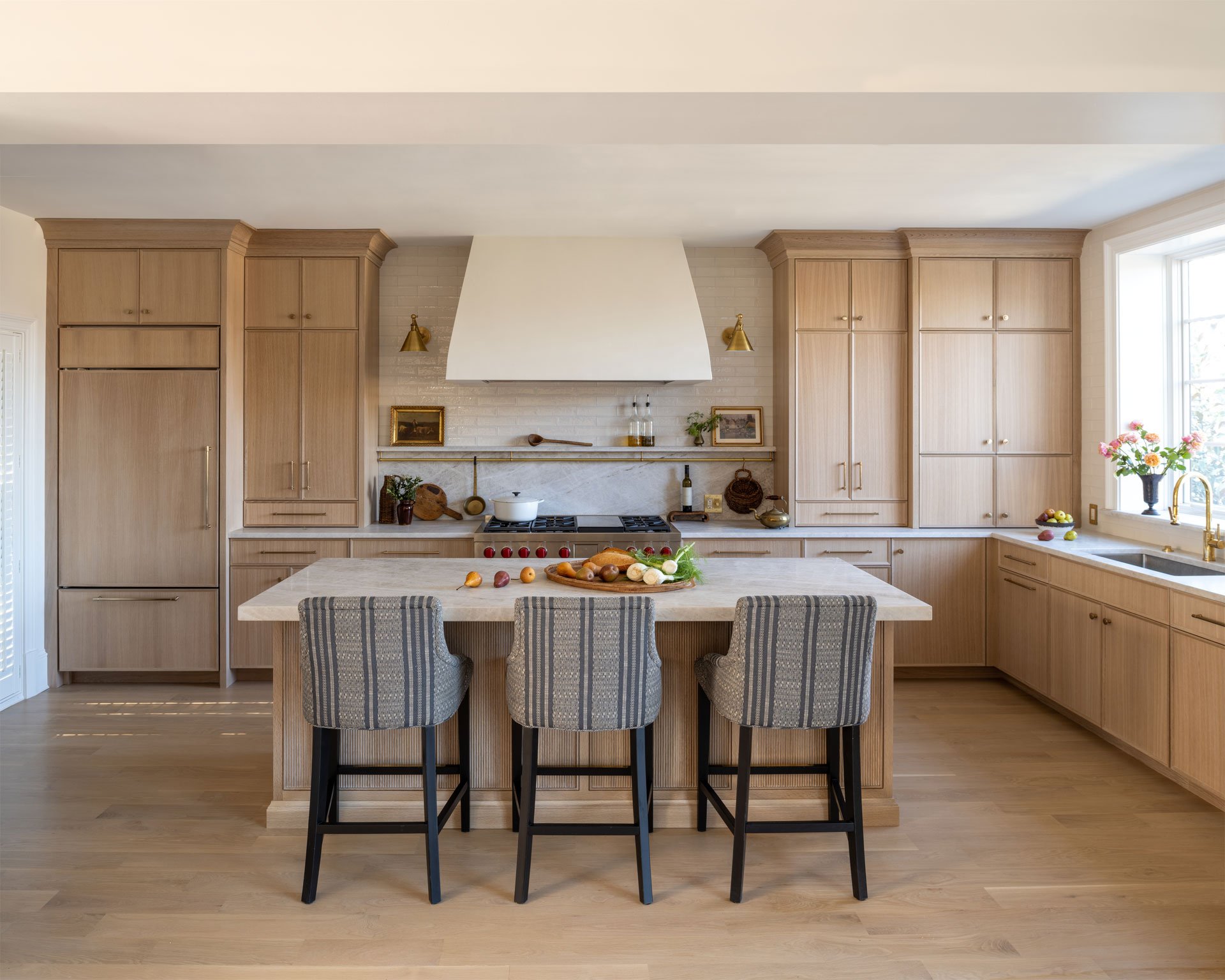
Table of Contents
In the world of luxury interior design, materials often cycle through moments of prominence. Yet, some possess an enduring charm that transcends fleeting trends. White oak stands confidently in this category. Currently enjoying a well-deserved spotlight, its appeal runs much deeper than mere fashion. For discerning homeowners and experienced interior designers across New England, the Mid-Atlantic, and beyond, white oak kitchen cabinets represent a remarkable convergence of natural beauty, inherent strength, and sophisticated versatility – qualities we at Master Design Cabinetry understand and celebrate in every bespoke piece we create.
Once perhaps perceived as a more traditional choice, white oak kitchen cabinets have gracefully evolved, proving their adaptability in the most sought-after contemporary aesthetics. From the serene, minimalist warmth of Japandi design to the refined comfort of Modern Farmhouse, the clean lines of Contemporary spaces, and the balanced harmony of Transitional kitchens, white oak lends its unique character with effortless elegance. Its neutral-to-warm undertones and captivating grain patterns offer a versatile canvas, bringing tactile warmth and an essential connection to nature into thoughtfully designed homes.
But specifying white oak kitchen cabinets involves more than simply appreciating its surface beauty. It requires a deeper understanding – a knowledge of how the wood is cut, how its quality is graded, and how different finishes can transform its personality. It’s about recognizing its robust performance characteristics that promise longevity, even in the busiest of households. True luxury lies in this blend of artistry and expertise. This guide aims to illuminate the nuances of white oak kitchen cabinets, empowering you to make informed, inspired choices for creating spaces that are not only beautiful today but will endure in style and function for generations to come. Join us as we explore why white oak continues to be the premier choice for crafting cabinetry that embodies approachable luxury.
The Enduring Allure: Why White Oak Resonates
What is it about white oak that captures the imagination of designers and homeowners alike? Its resurgence isn’t accidental; it stems from a unique combination of qualities that align perfectly with contemporary desires for authenticity, warmth, and timeless style.
At its core, white oak kitchen cabinets offer an undeniable connection to the natural world. Its grain tells a story – of growth, strength, and quiet resilience. In an increasingly digital age, incorporating natural materials like white oak into our homes fosters a sense of grounding and tranquility. Its inherent warmth, ranging from pale biscuit tones to richer honey hues depending on the finish, provides a welcoming counterpoint to the cooler palettes often favored in modern design. This warmth isn’t overpowering; it’s subtle, sophisticated, and deeply inviting.
Beyond its intrinsic beauty, white oak kitchen cabinets’ remarkable versatility is key to their enduring appeal. It integrates seamlessly into diverse design narratives:
Japandi
This harmonious blend of Japanese minimalism and Scandinavian function thrives on natural materials and clean lines. Lightly finished rift-sawn white oak cabinets, with their consistent linear grain, provide the perfect foundation for Japandi’s uncluttered elegance and emphasis on craftsmanship.
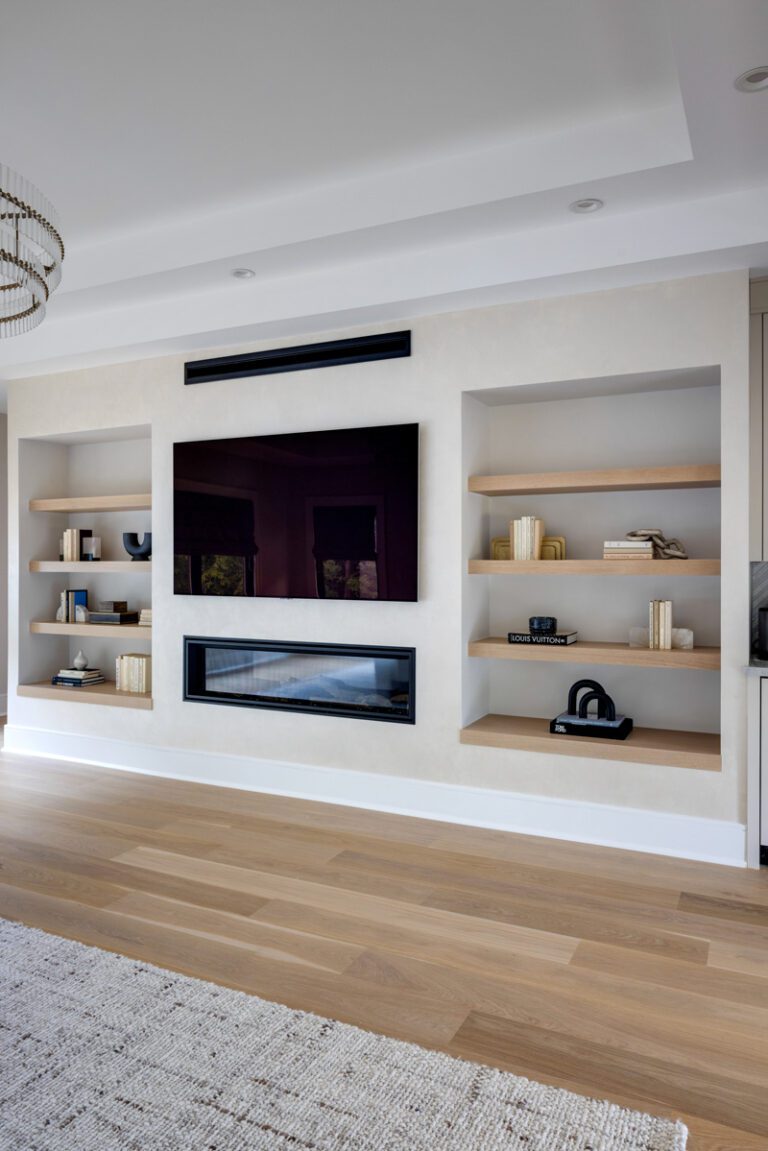
Modern Farmhouse
Balancing rustic charm with contemporary simplicity, this style embraces white oak for its texture and warmth. Natural, whitewashed, or lightly stained finishes on Shaker-style doors evoke a sense of comfortable sophistication, often paired with contrasting elements like dark hardware or sleek quartz countertops.
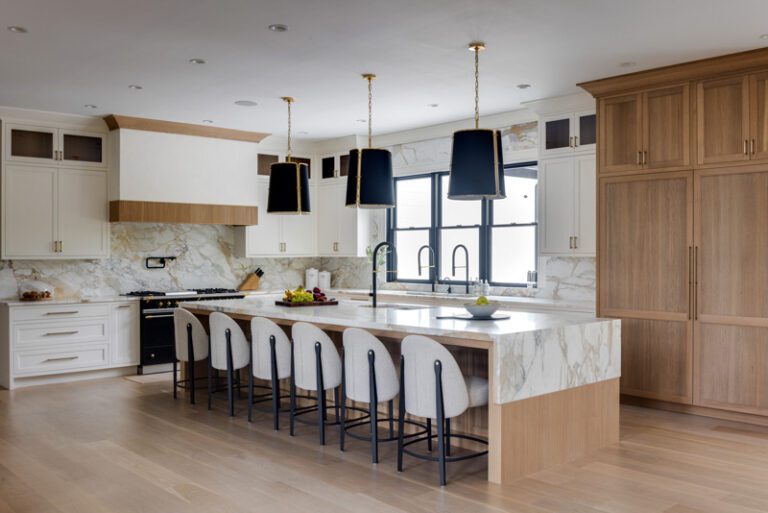
Contemporary & Modern
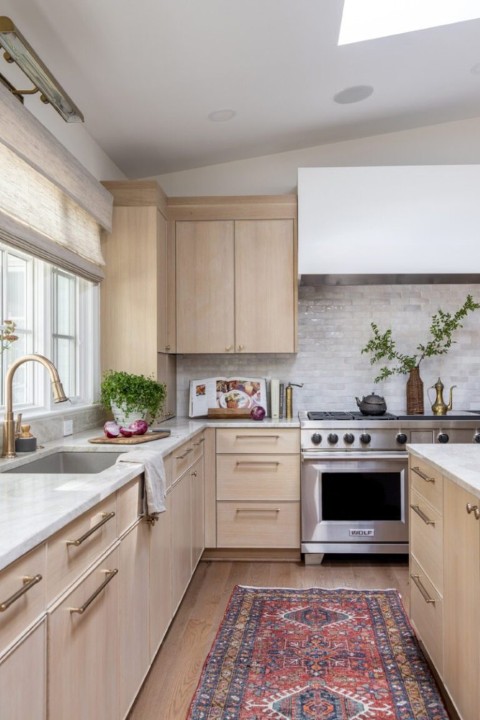
Transitional
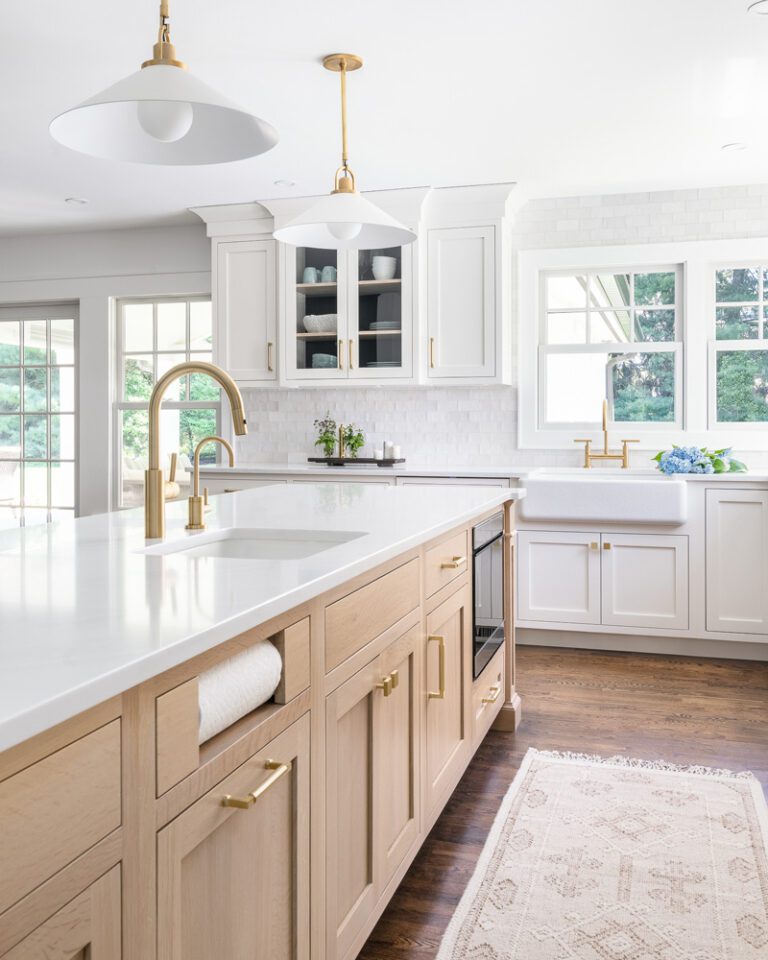
This ability to complement various aesthetics speaks to white oak’s Timeless Design potential. While specific applications or finishes might reflect current preferences, the wood itself possesses a classic quality that resists dating. Choosing white oak is an investment in enduring style, a decision that feels both relevant now and promises lasting appeal for years to come. At Master Design Cabinetry, we partner with you to harness this versatility, tailoring the specific cut, finish, and design details to perfectly express your unique vision, ensuring your cabinetry is a true reflection of personal style grounded in timeless quality.
Understanding the Foundation: Cut, Grade, and Character
Achieving the desired aesthetic and ensuring long-term performance in white oak cabinets starts with a fundamental understanding of the wood itself. How a white oak log is milled and graded profoundly impacts its appearance, stability, and ultimately, its suitability for your specific project. This knowledge is central to the Collaborative process at Master Design Cabinetry, where we guide clients through these crucial choices.
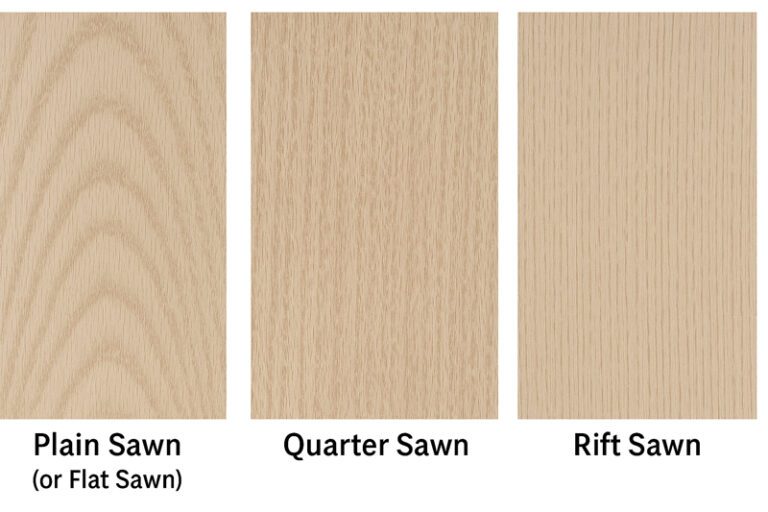
The Significance of the Cut: Shaping Grain and Stability
The angle at which lumber is sawn from the log determines the visible grain pattern and the wood’s dimensional stability – its tendency to expand or contract with humidity changes. There are three primary cuts to understand:
- Plain Sawn (or Flat Sawn): This is the most common and economical method, involving parallel cuts through the log.
- Appearance: Showcases the classic, often bold “cathedral” or arched grain pattern. The look is dynamic and distinctly “oak.”
- Stability: Least dimensionally stable. Prone to more noticeable movement (cupping, warping) across the width of the board.
- Best Suited For: General cabinetry, styles where a prominent wood grain is desired (like Farmhouse or Traditional), and applications where slight movement is acceptable or can be managed through construction techniques.
- Quarter Sawn: The log is quartered, and then sawn perpendicular to the growth rings.
- Appearance: Produces a generally straight, linear grain. Its hallmark feature in white oak is the prominent “ray fleck” – shimmering, ribbon-like patterns created by slicing through the wood’s medullary rays. This adds unique visual interest and texture.
- Stability: Significantly more stable than plain sawn, with movement occurring primarily in thickness rather than width.
- Best Suited For: High-quality furniture and cabinetry, styles emphasizing craftsmanship (like Arts & Crafts or some Transitional looks), and applications requiring good stability.
- Rift Sawn: Milled at an angle that avoids the medullary rays, resulting in the most uniform appearance.
- Appearance: Features an extremely consistent, straight, linear grain with minimal to no ray fleck. Offers a clean, refined, and often contemporary aesthetic.
- Stability: The most dimensionally stable of the three cuts, exhibiting the least movement.
- Best Suited For: High-end contemporary, minimalist, and Japandi designs; applications demanding maximum stability and tight tolerances, such as inset cabinetry or large slab doors, especially in environments with humidity fluctuations (kitchens, baths).
The choice of cut for rift-sawn white oak cabinets is a deliberate design decision. The pronounced linearity of rift sawn oak perfectly complements modern aesthetics, while the unique fleck of quarter sawn adds artisanal character. Plain rift-sawn white oak cabinets offer classic oak beauty. Understanding these differences, including the higher cost associated with the lower yield and increased labor of quarter and rift sawing, is crucial. Our expertise helps ensure the selected cut aligns perfectly with both your design vision and the functional demands of your space.
Decoding Wood Grades: Specifying for Luxury
Beyond the cut, the grade of the lumber dictates its quality and clarity. Hardwood grading focuses on the percentage of clear, defect-free wood obtainable from a board. For the level of refinement expected in luxury custom cabinetry, we consistently utilize premium grades:
- FAS (Firsts and Seconds): The highest standard grade, yielding the largest amount of clear wood in long, wide pieces. Ideal for applications where appearance and consistency are paramount.
- Select & Better (including F1F and Selects): Grades closely related to FAS, ensuring at least one face meets the highest standards. Often referred to as “Prime Grade,” signifying top-tier lumber suitable for demanding aesthetic applications.
Using these premium grades ensures minimal natural imperfections like knots or excessive color variation, providing the clean, high-quality foundation essential for luxury white oak kitchen cabinets. For truly Bespoke Customization, we can go further, implementing color sorting to ensure exceptional uniformity across a large project or meticulous grain matching for seamless transitions between adjacent doors and drawers. This commitment to premium materials is fundamental to the Confident quality promise embedded in every Master Design Cabinetry project.
While premium cuts and grades represent a higher initial investment, they contribute directly to the cabinetry’s Lasting Value. The enhanced stability prevents issues like binding doors or uneven gaps, while the clearer material provides a superior canvas for exquisite finishes, ensuring enduring beauty and function.
Built to Endure: Performance and Practicality
Luxury white oak kitchen cabinets must be more than just beautiful; it needs to withstand the rigors of daily life, particularly in hardworking kitchens and moisture-prone bathrooms. White oak excels in this regard, offering a compelling combination of hardness, stability, and natural resilience.
Hardness and Resilience: Ready for Real Life
White oak boast an impressive Janka hardness rating of 1360 lbf. This technical measure quantifies the force needed to dent the wood, placing white oak firmly among durable domestic hardwoods. What does this mean for your home? It translates to excellent resistance against the inevitable bumps, scratches, and dings of everyday use. This inherent toughness makes white oak a practical choice for active households, offering peace of mind alongside its aesthetic appeal. Furthermore, oak’s noticeable grain texture can help camouflage minor imperfections that might stand out on smoother woods. When combined with the high-performance, catalyzed finishes applied, the result is cabinetry that is both beautiful and remarkably resilient.
Dimensional Stability and Moisture Resistance
One of white oak’s standout features is its natural suitability for environments like kitchens and bathrooms. It possesses good dimensional stability (especially rift and quarter sawn cuts, as discussed) and remarkable resistance to moisture and decay.
This is largely due to tyloses, natural growths within the wood’s pores that act like microscopic plugs, blocking water absorption. This cellular structure makes white oak less porous than its cousin, red oak, and contributes to its historical use in demanding applications like boatbuilding and barrel making – a testament to its water-resistant nature. Utilizing more stable cuts, such as rift or quarter sawn, for critical sections will ensure these white oak kitchen cabinets retain their precise fit and function, even amidst fluctuating humidity levels.
A Practical Choice Among Peers
When compared to other popular luxury hardwoods like American Black Walnut or American Cherry, white oak often presents a superior balance of practical performance. While walnut offers stunning natural color and cherry develops a rich patina, white oak surpasses both in hardness and moisture resistance. It’s less prone to denting than walnut and significantly more durable than the softer cherry. For homeowners prioritizing longevity and ease of care alongside beauty, white oak’s robust physical properties make it an exceptionally Wise and reliable choice.
Bringing Vision to Life: Finishing White Oak
The inherent beauty of white oak provides a stunning foundation for custom white oak cabinets, but the chosen finish truly defines its final character and style. Finishing is where artistry meets technical expertise, transforming raw wood into a durable, beautiful reflection of your personal taste. From celebrating white oak’s natural state to imparting custom color or unique texture, we offer a curated range of finishing options, applied with meticulous craftsmanship using advanced, high-quality materials.
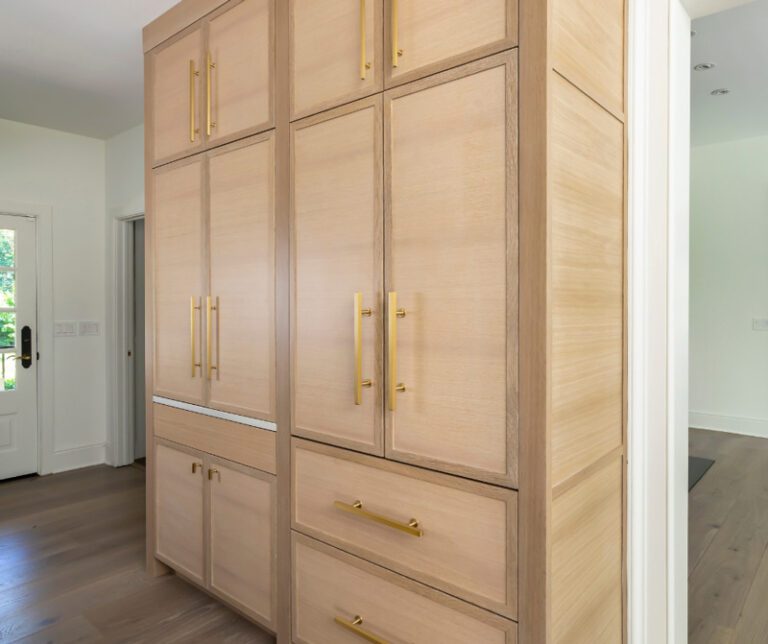
Natural & Clear Finishes: Celebrating Authenticity
For many, especially when using premium rift-sawn white oak cabinets or quarter-sawn white oak with its refined grain, the goal is to preserve the wood’s innate beauty. Achieving a truly “natural” look that lasts requires sophisticated finishing techniques and superior materials:
- Advanced Water-Based Topcoats: Traditional oil-based finishes can yellow over time, altering the wood’s true color. At Master Design, we utilize advanced 2K water-based poly sealers and topcoats. These are meticulously formulated for exceptional clarity, durability, and resistance to yellowing, scratches, marring, common household chemicals, and UV damage. This protects the wood while preserving its authentic hue for decades.
- Specialized Sealers/Stains: To counteract any potential warming effect and maintain the light, raw look, specific sealers or ultra-light stains can be employed as a base layer. Sometimes, a minuscule amount of white pigment might be subtly integrated.
- Matte & Flat Sheens: Reflecting less light, these sheens mimic the appearance of unfinished wood, enhancing the natural, organic feel desired in many contemporary designs.
- Hand-Finishing Touch: Our commitment to quality includes meticulous hand-finishing techniques, ensuring even application and highlighting the wood’s natural characteristics, even with clear coats.
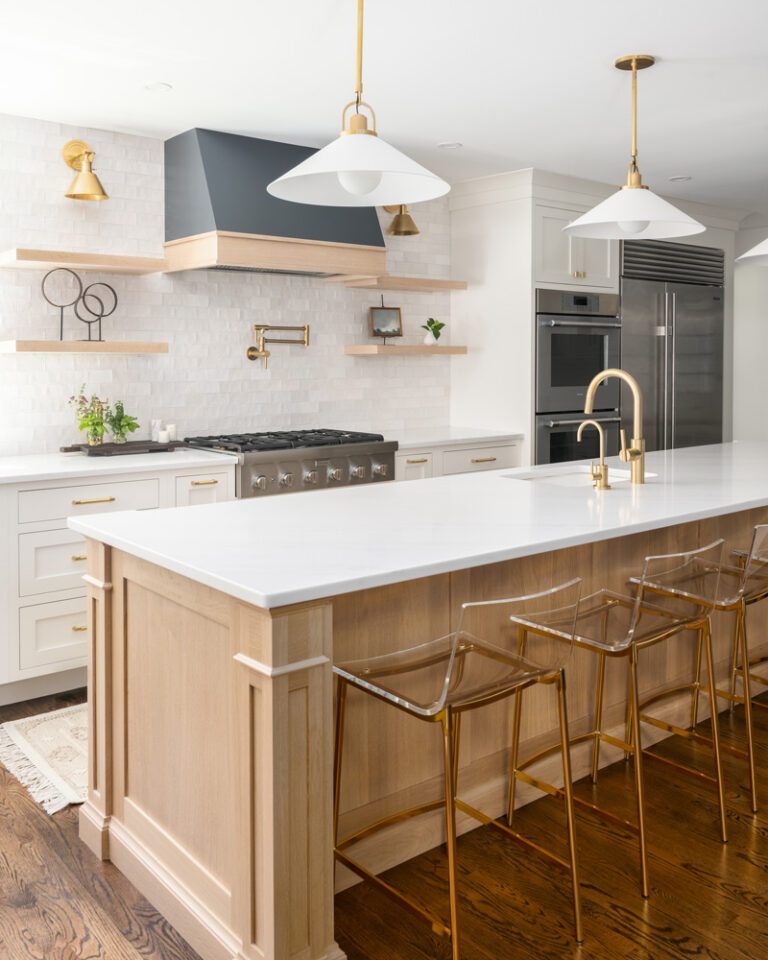
Stained Finishes: Tailoring the Tone with Durability
White oak accepts stains beautifully and evenly, allowing for tremendous customization for white oak kitchen cabinets while still showcasing the wood’s inherent texture and grain. We elevate stained finishes through careful preparation and application:
- Meticulous Preparation: Each piece undergoes thorough hand-sanding by skilled artisans. This crucial step ensures an even absorption of the stain across the entire surface.
- Expert Application: Using a combination of spraying and hand-application techniques, we achieve stunning, transparent color that elegantly highlights the wood’s grain and character.
- Protective Topcoat: The beauty is sealed in with a robust 2K water-based polyurethane topcoat, guaranteeing both lasting protection and a gentle luster. This finish provides a smooth, silky touch, making the cabinets a delight to see and use.
Color Possibilities: Popular choices range from light whitewashes and pale grays for airy aesthetics to warm medium tones (honey, chestnut) for richness, and deep dark tones (walnut, ebony, charcoal) for dramatic sophistication. Versatile gray stains remain a modern favorite.
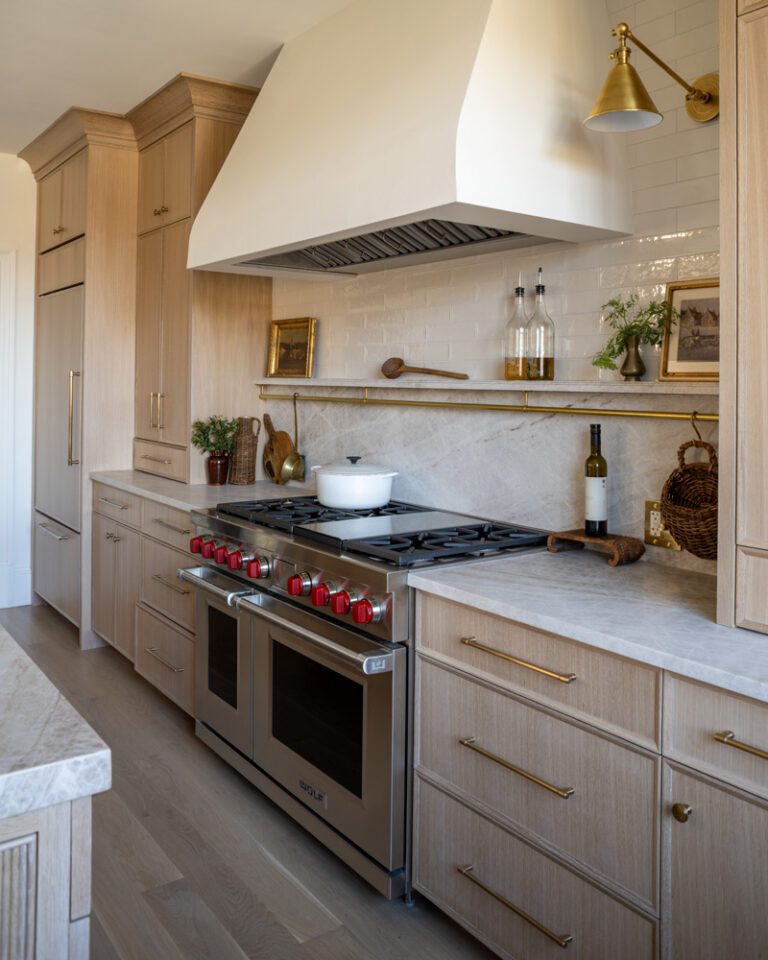
Painted Finishes: Unlimited Color Horizons with Lasting Quality
While often chosen for its grain, white oak can certainly be painted, opening up limitless color possibilities.
- Premium Enamel Paints: We use high-quality enamel paints known for their smoothness, durability, and rich, saturated colors.
- Custom Color Palette: Whether you prefer classic whites and grays, trending greens and blues, or a unique custom hue, our expansive palette caters to every style.
- Textured Character: It’s important to note that oak’s open grain structure typically shows through the paint, creating a subtly textured surface rather than a perfectly smooth one like maple might offer. This inherent characteristic is part of oak’s charm.
- Durable Protection: Like all our finishes, painted cabinets receive the same high-quality, resilient topcoats for enduring beauty.
Glaze & Distressed Finishes: Adding Depth and Character
Beyond standard stains and paints, we offer techniques to add further dimension:
- Glaze Finish: A semi-transparent color is applied over a base paint or stain. This glaze settles into profiles and details, creating subtle brushstroke effects and enriching the base color with added depth.
- Rub-Thru Option: For an antique, time-worn look, the Rub-Thru technique (available with painted finishes) involves strategically sanding corners and edges before the final topcoat, revealing hints of the underlying wood. This adds authentic, vintage appeal.
Cerused Finishes: Textured Elegance
A technique enjoying a significant revival, cerusing (also known as liming or pickling) involves highlighting oak’s open grain with a contrasting pigment, usually white or light-colored wax or diluted paint. After application, the excess is wiped away, leaving the grain dramatically defined against the base wood color of the white oak kitchen cabinets. This creates a sophisticated, subtly textured, two-toned effect that bridges rustic charm and modern elegance. White oak, with its pronounced grain, is the ideal canvas for this artisanal finish, adding a layer of Bespoke Customization and visual depth.
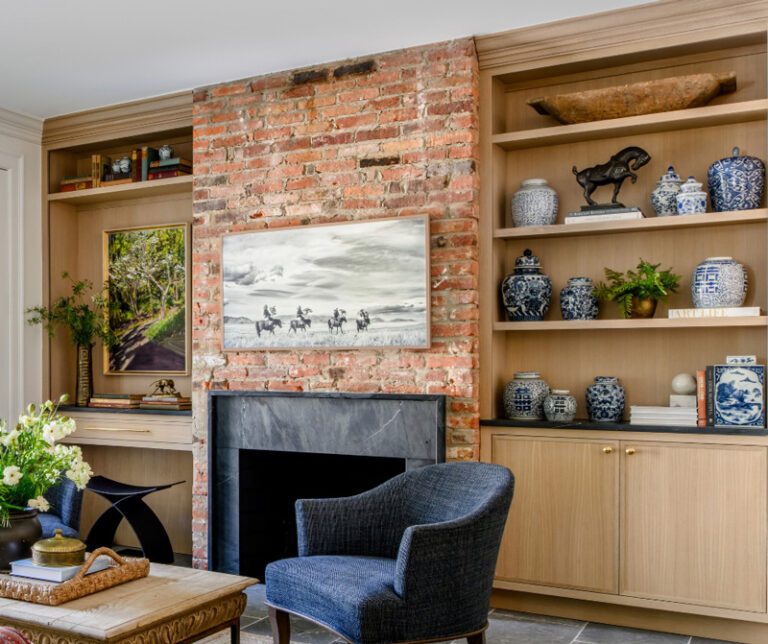
The Synergy of Cut and Finish
The choice of cut and finish should work in harmony. The refined linearity of rift-sawn white oak cabinets or the unique fleck of quarter-sawn oak are often best showcased with natural, clear, lightly stained, or cerused finishes that enhance these features. Opaque paint might obscure the investment made in these premium cuts. Conversely, the bolder pattern of plain sawn oak holds its own beautifully under various stains, clear coats, and even paint, offering versatility and potentially a more cost-effective route to certain looks. Our collaborative design process ensures these choices align perfectly to achieve your vision.
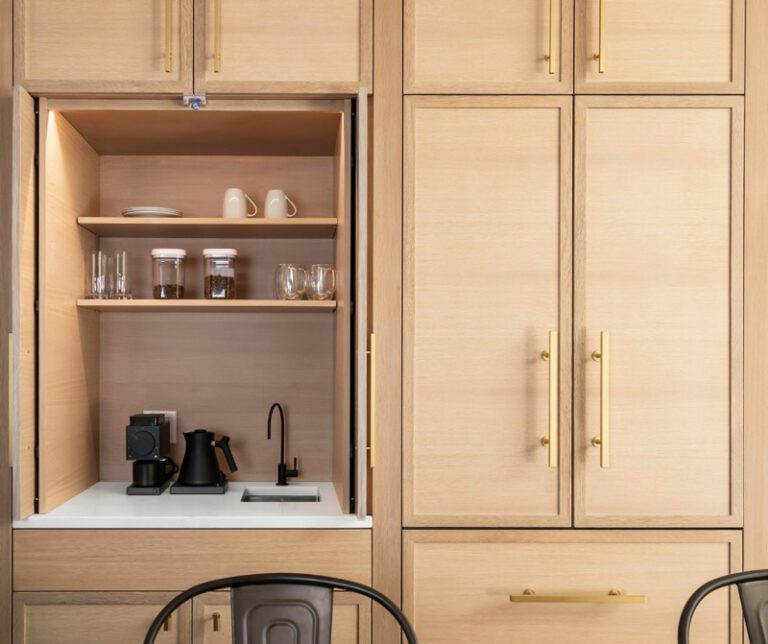
Creating Harmony: Pairing White Oak with Style
White oak kitchen cabinets, however beautiful, exist within a larger design context. Achieving a truly cohesive and elevated space involves thoughtfully pairing your white oak cabinetry with complementary countertops, hardware, and surrounding colors. This is where our Collaborative spirit shines, as we help guide you through these selections to create a harmonious and personalized environment.
Countertop Companions:
The right countertop material for white oak kitchen cabinets can either provide a quiet backdrop for the oak or create a striking focal point. Popular pairings include:
- White Quartz: A dominant choice, offering a clean, bright contrast that allows the oak’s warmth and texture to stand out. Its durability and low maintenance are significant advantages. Look for variations with subtle warm veining (soft grays, golds, or beiges) to harmonize beautifully with the wood tones.
- Marble: The epitome of luxury, marble (like Carrara or Calacatta) offers timeless elegance with soft, organic veining that contrasts beautifully with oak’s grain. While requiring more maintenance (sealing is essential), its natural beauty is unparalleled.
- Granite: A durable natural stone available in various colors. Light granites with subtle flecks can tie into oak’s tones, while dark granites (black, deep gray) create sophisticated contrast. Textured finishes like honed or leathered granite add tactile interest.
- Other Materials: Soapstone offers a smooth, matte elegance. Concrete provides an industrial edge. Butcher block enhances warmth, especially in farmhouse styles. Dark countertops, in general, create a modern, dramatic look against lighter oak finishes.
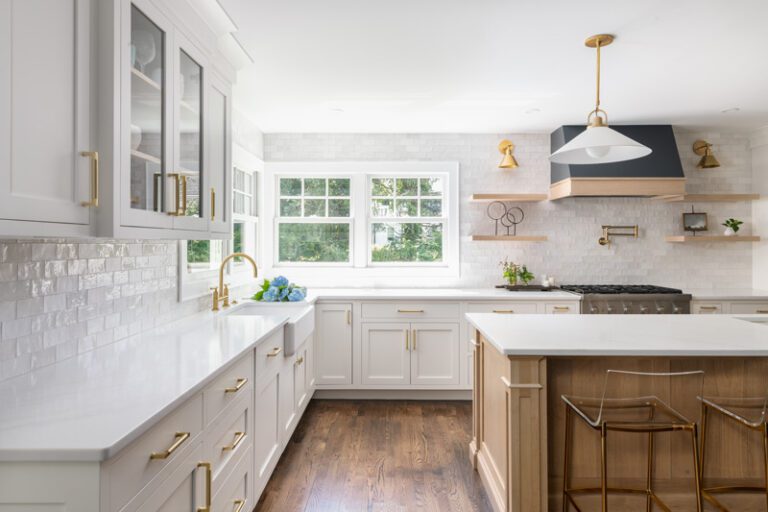
The key is balance – a highly figured countertop might pair best with quiet rift-sawn white oak cabinets, while a bolder plain sawn grain could be beautifully complemented by a simpler quartz.
Hardware: The Finishing Touch:
Cabinet hardware acts as the jewelry of your kitchen or bath, completing the look and reinforcing the chosen style. Current trends and timeless choices include:
- Matte Black: Extremely popular for its sharp, graphic contrast against white oak, fitting well in modern, contemporary, and farmhouse styles.
- Brass & Gold: Adds warmth, luxury, and a touch of glamour. Satin or brushed finishes are common, complementing oak’s natural warmth.
- Nickel (Brushed/Satin/Polished): A versatile and timeless option. Brushed/satin finishes offer a soft, contemporary look, while polished nickel provides warmth suitable for transitional or classic designs.
- Bronze (Oil-Rubbed/Antique): Offers a darker, aged appearance ideal for traditional or rustic aesthetics.
- Chrome: A bright, cool finish best suited for distinctly modern spaces.
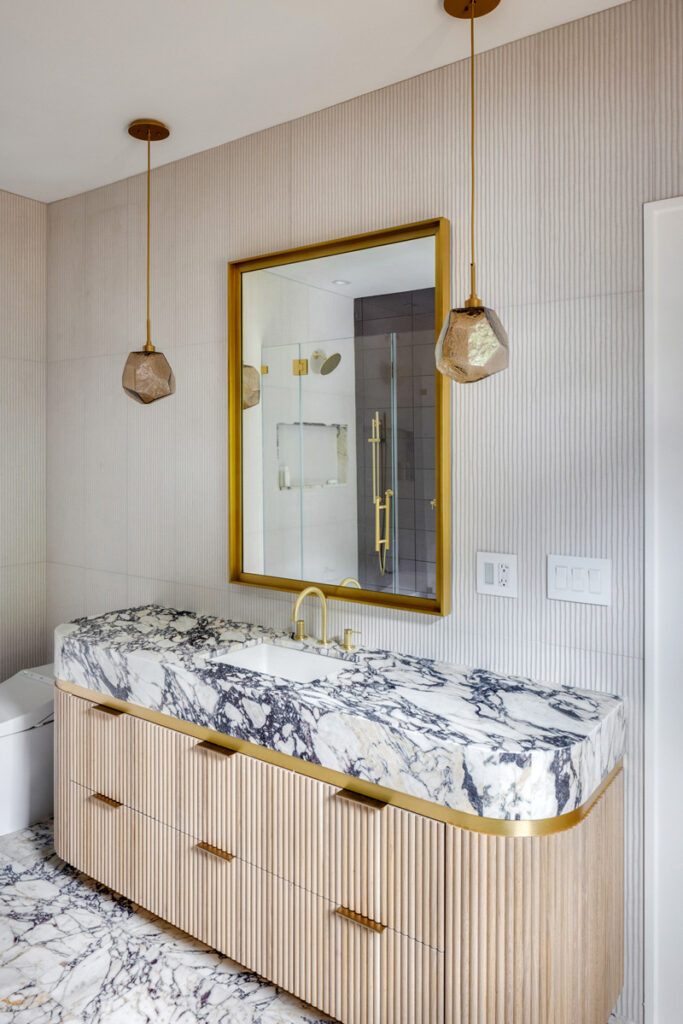
Consider the overall feel – warm metals like brass enhance oak’s warmth, while cool metals like chrome or black provide contrast. Mixing metals thoughtfully can also add a sophisticated, custom layer.
Color Palettes: Setting the Mood:
Wall colors and accents create the atmosphere surrounding your white oak kitchen cabinets:
- Whites & Off-Whites: Timeless, bright, and clean, allowing the oak’s texture to shine. Choose whites with slightly warm undertones (like Benjamin Moore’s Swiss Coffee or White Dove) for seamless harmony.
- Neutrals (Grays, Beiges, Greiges): Soft, sophisticated, and versatile. Warm grays or greiges (like Sherwin-Williams’ Accessible Beige or Benjamin Moore’s Revere Pewter) often pair beautifully.
- Greens: Earthy sage, olive, moss, or even deeper forest greens create a calming, nature-inspired connection with the wood.
- Blues: From serene light blues to sophisticated navy, blues offer classic or bold contrast.
- Dark Tones: Black, charcoal, or deep navy accent walls can create dramatic, modern backdrops.
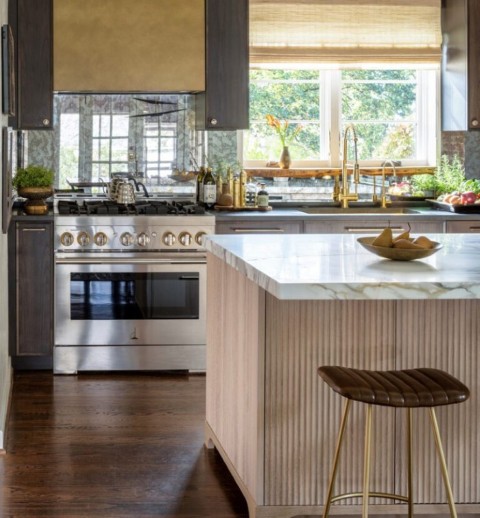
Successful pairing involves creating intentional relationships between elements. Sometimes the white oak kitchen cabinets are the star, supported by quieter choices elsewhere. Other times, a dramatic countertop or bold color takes center stage, with the oak providing a warm, grounding element. Our design expertise helps navigate these choices, ensuring a result that feels balanced, intentional, and luxuriously cohesive.
The Master Design Cabinetry Difference: Sourcing and Craftsmanship
Our commitment to Personal Luxury extends beyond design consultation to the very materials we use and the hands that shape them. We understand that exceptional results begin with exceptional ingredients. That’s why we meticulously source premium North American white oak, prioritizing the specific cuts and high grades (FAS, Select & Better) demanded by luxury applications. We partner with reputable suppliers who understand the nuances of architectural-grade lumber and share our commitment to quality.
Furthermore, we recognize the growing importance of environmental stewardship. We actively seek and utilize white oak sourced from responsibly managed forests, often looking for certifications like FSC (Forest Stewardship Council) or PEFC (Programme for the Endorsement of Forest Certification) whenever possible. This ensures that the beauty of your cabinetry is matched by the integrity of its origins.
This dedication to superior materials is matched only by our unwavering commitment to Exceptional Craftsmanship. Our skilled artisans blend time-honored woodworking techniques with modern precision, ensuring every joint is strong, every detail is refined, and every finish is flawlessly applied. This fusion of quality materials and meticulous skill is the cornerstone of the Confident promise we make to every client – delivering bespoke cabinetry built not just for beauty, but for a lifetime of enjoyment.
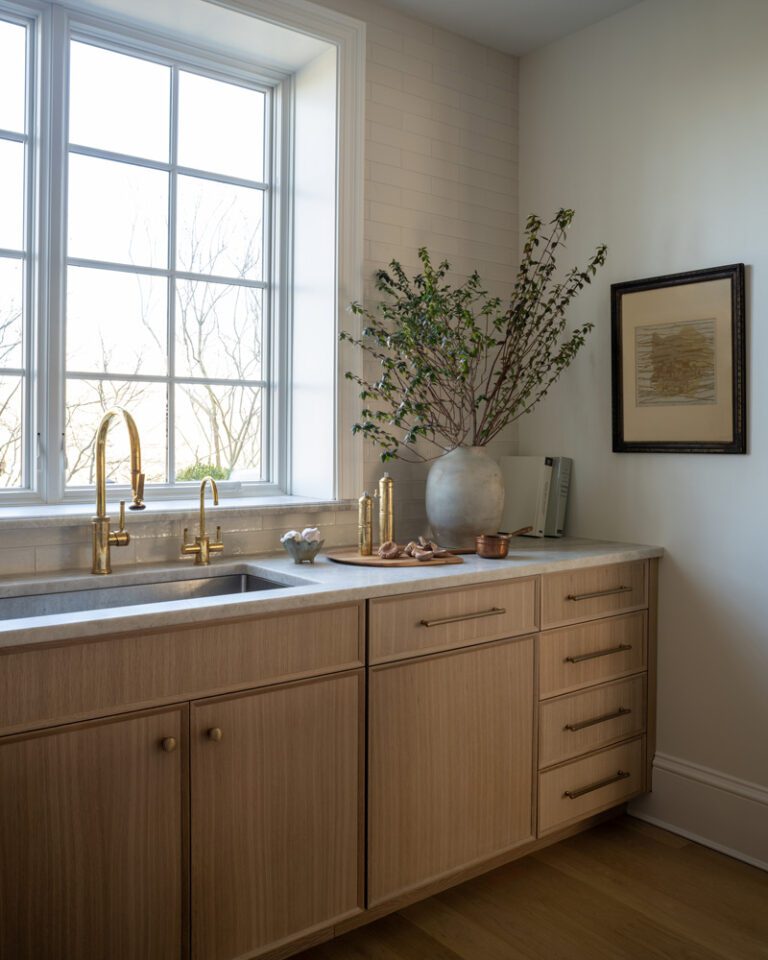
The Enduring Choice for Inspired Living
White oak’s journey in design is a testament to its inherent qualities. It is both a reflection of current tastes and a classic material with deep roots and enduring appeal. Its unique blend of warmth, strength, versatility, and natural beauty makes it an exceptional choice for crafting luxury custom cabinetry that elevates everyday living.
From understanding the subtle language of its grain based on the cut, to selecting the perfect finish that expresses your personal style, white oak kitchen cabinets offer a rich palette for creating truly bespoke spaces. At Master Design Cabinetry, we are passionate about guiding our clients through this process, combining our Knowledgeable expertise with a Warm and Collaborative approach.
We invite you to experience the Personal Luxury of white oak. Contact us today, and let’s begin the conversation about bringing your vision for timeless, handcrafted quality to life in your home.
